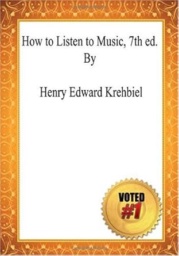

How to Listen to Music, 7th ed. (1896)
by Henry Edward Krehbiel


It is in Bach, who came a century after Palestrina, that we find the most eloquent musical proclamation of the new regime, and it is in no sense disrespectful to the great German master if we feel that the change in ideals was accompanied with a loss in sensuous charm, or pure aesthetic beauty. Effect has had to yield to idea. It is in the flow of the voices, the color effects which result from combination and registers, the clarity of the harmonies, the reposefulness coming from conscious ease of utterance, the loveliness of each individual part, and the spiritual exaltation of the whole that the aesthetic mystery of Palestrina's music lies.🏁
Global Leaderboard
| # | Player | Time | Duration | Accuracy | WPM | pp | ||
|---|---|---|---|---|---|---|---|---|
| 1 | ||||||||
| 2 | ||||||||
| 3 | ||||||||
| 4 | ||||||||
| 5 | ||||||||
| 6 | ||||||||
| 7 | ||||||||
| 8 | ||||||||
| 9 | ||||||||
| 10 |


It is in Bach, who came a century after Palestrina, that we find the most eloquent musical proclamation of the new regime, and it is in no sense disrespectful to the great German master if we feel that the change in ideals was accompanied with a loss in sensuous charm, or pure aesthetic beauty. Effect has had to yield to idea. It is in the flow of the voices, the color effects which result from combination and registers, the clarity of the harmonies, the reposefulness coming from conscious ease of utterance, the loveliness of each individual part, and the spiritual exaltation of the whole that the aesthetic mystery of Palestrina's music lies.🏁
